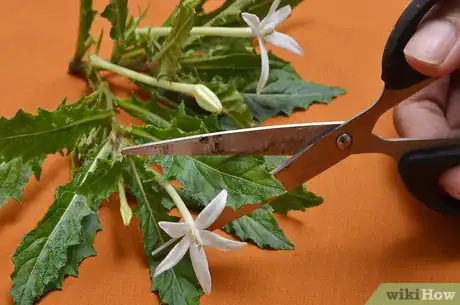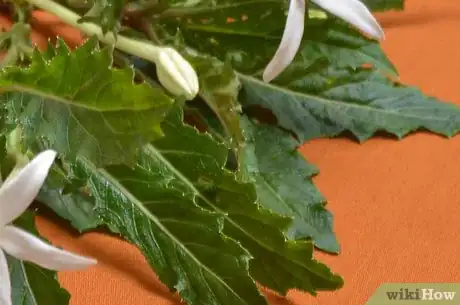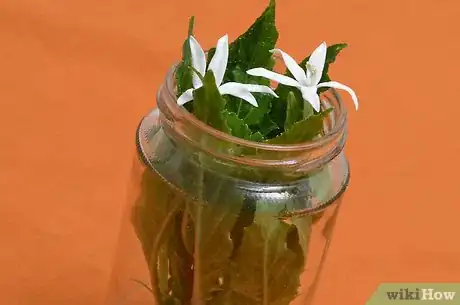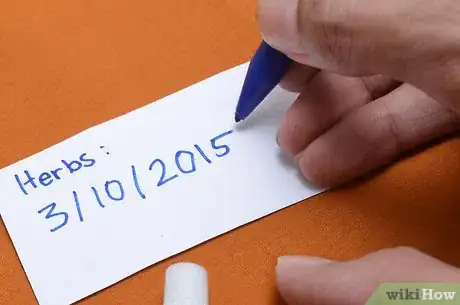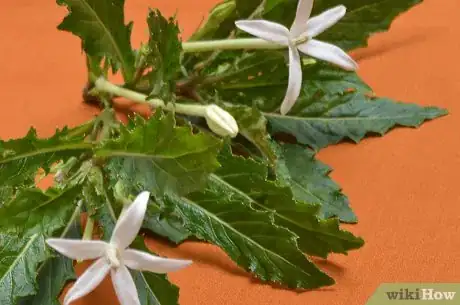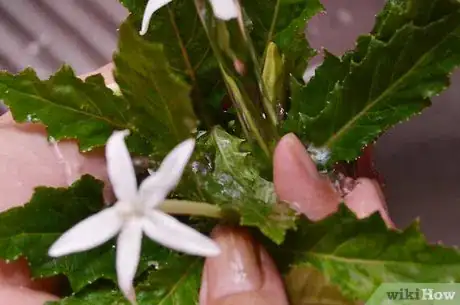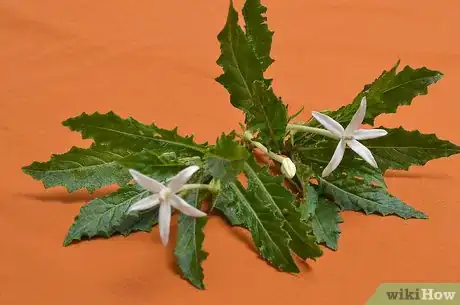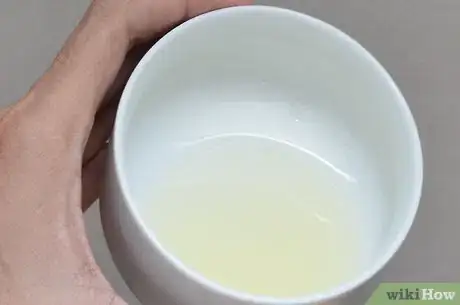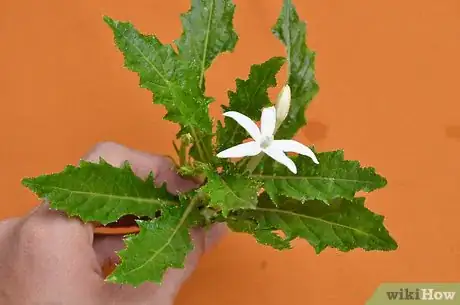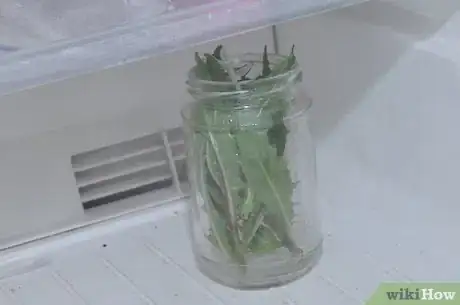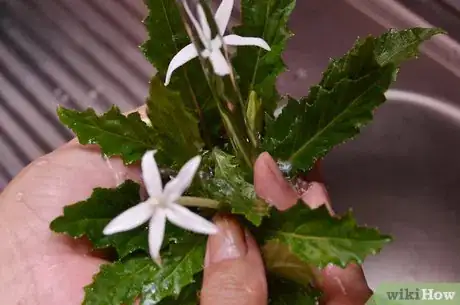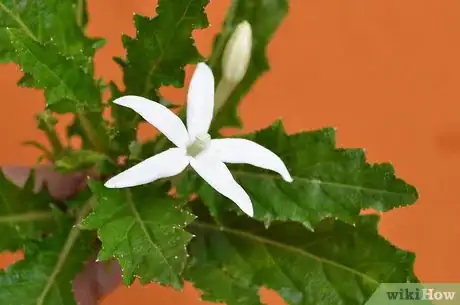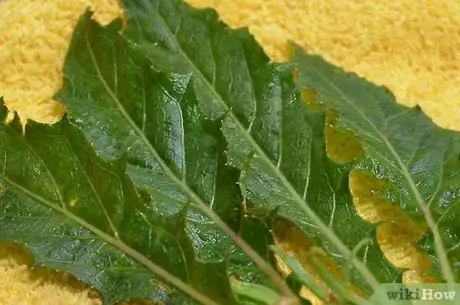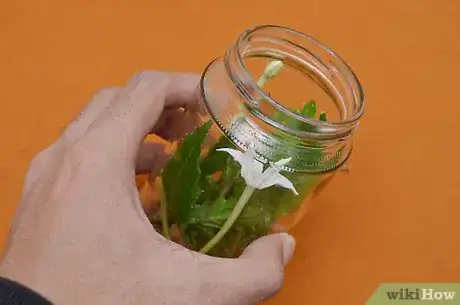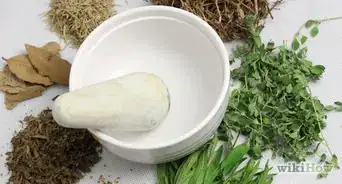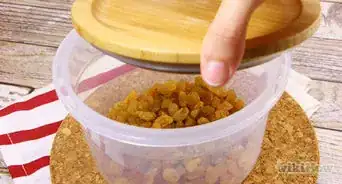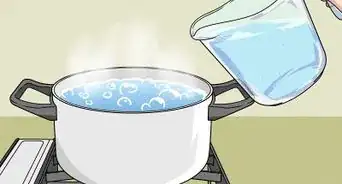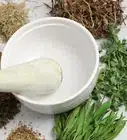This article was co-authored by Julie Brow-Polanco. Julie Brow-Polanco is a Master Herbalist & Certified Aromatherapist with more than 11 years of experience. She is an expert on natural remedies and specializes in using them to support whole-body wellness, particularly immune, digestive, nervous, and reproductive health. Julie earned a Bachelor's Degree in Psychology from Dominican University, a Master Herbalist Certification from The School of Natural Healing, and a Certificate of Aromatherapy from the Pacific Institute of Aromatherapy. Julie is a member of the American Herbalist Guild and a Certified Aromatherapist through the National Association of Holistic Aromatherapy.
There are 17 references cited in this article, which can be found at the bottom of the page.
This article has been viewed 456,058 times.
Herbs can be preserved in various ways including drying, freezing and adding to oil. The method you choose will depend on the type of herb, your own storage preferences and what you intend to use the herbs for.
Steps
-
1Harvest herbs from the garden. Use strong scissors or a kitchen knife to snip the herbs. If the herb can survive winter (i.e. it is a perennial with over-wintering abilities), cut the stems at the base of the plant. Other herbs can be entirely pulled out and the roots and woody parts composted after cutting. Cut all herbs used for drying in a way that leaves them with long stems. See "Tips" for hints on best times to harvest.[1]
-
2
Hanging Herbs
-
1Hang herbs to dry them for a quick preserving method that doesn't require too much effort.
-
2Remove lower leaves from the stems and tie the bunch of herbs together close to the top of the stems. Ideally, a bunch should contain no more than 5 - 10 stems to facilitate ventilation.[3]
-
3Find a dry, warm (not humid), dark and well-ventilated place that is out of the way of pedestrian traffic or constant rummaging. The ideal temperature for drying is around 68ºF/20ºC. If you do not have a dark spot in the house, you can try tying paper lunch bags over each bunch and piercing airholes in the bag. This has the added bonus of also keeping the dust off.[4]
- Keep the herbs out of the sunlight. Sunlight will contribute to the oxidation, which will cause the herbs to lose some of their potency.
-
4Leave the herbs to dry for 1 - 3 weeks. Check them every now and then to see how they are drying - thicker stemmed herbs will take longer. Check to see if their consistency has become crumbly by rubbing a leaf between two fingers. If they crumble, they are ready to be taken down.[5]
-
5Remove the leaves and bottle them in airtight glass herb jars (or other jars you have around). Pick out any fluff, woody pieces and other foreign material as you remove the leaves. You can keep the leaves whole, crush them in your fingers to make a really fine ground mix for cooking (but use this quickly to retain flavour) or leave them in leaf shape for tea, garnishes on soups, etc. (these should not be too crumbly). Seeds should be left whole and crushed only when needed for cooking.[6]
-
6Label the jar and date it. Store the herbs for up to one year.[7]
Freezing Herbs
-
1Freeze the herbs for ease of use when cooking. Not all herbs will freeze well but for those that do, here is what to do.
-
2
-
3Wash and dry freshly picked herbs, as above. Strip the leaves off and place them into freezer bags or containers. Label and date them as they should keep for up to 3 months. If you want them to last longer, blanch them for a few seconds in hot water and then dip straight into ice-cold water and pop them into the freezer in bags/containers. Blanched herbs will freeze for up to 6 months.[10]
-
4Some cooks prefer to freeze herbs in ice-cube trays, so that they have handy little sizes for cooking use. If you choose to do it this way, freeze approximately one-third chopped herbs to two-thirds water. Basil is great pureed with olive oil before freezing in ice cubes (don't add water). Remove herbs frozen as ice cubes and store in plastic freezer bags. Remove pieces as needed.[11]
Steeping Herbs in Oil
-
1Steep the herbs in oil to preserve the herbs long term. However, see the Warnings below first.
-
2Harvest and clean herbs as per instructions above.
-
3Choose an oil. Olive oil is preferred but any other oils that you like are generally fine.[12]
-
4Decide whether to keep the leaves attached to the stem or remove them and add them separately. If you want to use the oil as herbal flavoured oil, the stems are fine. Place in a bottle as a container; herbs remaining on their stem inside the oil bottle look very attractive as ornamental arrangements, as well as being useful culinary items. If you wish to remove the herbal leaves for cooking, a shorter, wider container is preferable to enable you to put in a spoon and scoop out the herbs and oil.
-
5Keep in a cool or refrigerated place, especially during warmer months. Use within 6 months of preparation.[13]
Drying Herbs on a Paper Towel
-
1Lay a clean paper towel on a counter top. Lay another one on top of this.
-
2Snip washed leaves off stem and arrange in rows on 1/2 of the towel.
-
3Lay another paper towel folded in 1/2 over leaves.
-
4Add another layer of leaves and bring other 1/2 of first 2 towel layers to cover this.[14]
-
5Leave it to dry about 2 days or 3 depending on leaf thickness. You know they're dry when you can crumble a leaf in your hand.
-
6Place in a zippered plastic bag or plastic container.[15]
Dehydrating Herbs
-
1Remove the stems from chosen herb. Using a dehydrator is probably the most efficient way to dry herbs.
- If you don’t have a dehydrator, you can set the herbs in the oven and use the lowest temperature setting available.
-
2Remove the leaves from the stem.
-
3Wipe clean.
-
4Place the herb leaves on dehydrator trays. Leave sufficient room for air circulation.
-
5Process in a dehydrator. Follow the dehydrator instructions for the leaf size.[16]
-
6Package in clean jars or airtight packaging.
-
7Label and store.
Community Q&A
-
QuestionHow long can dry herbs stay in the cupboard before they should be disposed of?
 Community AnswerDried herbs should be consumed within one to three years of purchase or harvesting and drying. After this time they lose their flavor and quality. The exact time will depend on which herbs are being stored, which is best looked up for the specific herb. Always store herbs away from heat and direct sunlight, in a cool, dry and dark area.
Community AnswerDried herbs should be consumed within one to three years of purchase or harvesting and drying. After this time they lose their flavor and quality. The exact time will depend on which herbs are being stored, which is best looked up for the specific herb. Always store herbs away from heat and direct sunlight, in a cool, dry and dark area. -
QuestionWhat is the best way to preserve rosemary?
 Community AnswerThe best way is to dry the rosemary. Gather a bunch of stems and bind them with a string or rubber band. Hang them in a dry, dark, and cool location. Be sure to rotate the rosemary every other day to ensure even drying. It is finished drying when crispy to the touch.
Community AnswerThe best way is to dry the rosemary. Gather a bunch of stems and bind them with a string or rubber band. Hang them in a dry, dark, and cool location. Be sure to rotate the rosemary every other day to ensure even drying. It is finished drying when crispy to the touch. -
QuestionWill cooking oil work instead of olive oil?
 Community AnswerDue to the scent and grease content, it's undesirable, but it would work as well. Grapeseed oil is one of the best options, though slightly more expensive. Natural food stores sell grapeseed oil.
Community AnswerDue to the scent and grease content, it's undesirable, but it would work as well. Grapeseed oil is one of the best options, though slightly more expensive. Natural food stores sell grapeseed oil.
Warnings
- Do not leave herbs hanging too long or their flavour will decline.⧼thumbs_response⧽
- Do not harvest herbs in moist conditions or while dew is still on them, as they will be difficult to dry by hand and will be more prone to mildew.⧼thumbs_response⧽
- If you have used chemicals in your garden, even if not directly on the herbs, you must take greater care to clean the herbs before drying, even if this means washing them more vigorously than described above. You and your family's health is precious so do not take risks.⧼thumbs_response⧽
- Herbed oils can cause botulism poisoning. Botulism is a potentially fatal food poisoning characterized by blurred or double vision, speech and breathing difficulty and progressive paralysis.[17] Without prompt and correct treatment, one-third of those diagnosed may die. Clostridium botulinum bacteria are widespread in the environment and the spores multiply in an environment without air (anaerobic) such as oils.[18] Therefore, herb-infused oils must have proper acidification and refrigeration to inhibit spore growth and toxin production.⧼thumbs_response⧽
Things You'll Need
- Fresh garden herbs or locally produced herbs
- Twine, elastic bands or wool for tying bunches together
- Dark, warm, well-ventilated area for hanging herbs
- Storage jars
- Freezer for freezing herbs
- Plastic bags
- Oil for steeping herbs
- Glass bottle or container for herbs in oil
References
- ↑ https://www.bhg.com/gardening/vegetable/herbs/harvesting-herbs-from-your-garden/
- ↑ https://www.cookinglight.com/cooking-101/techniques/how-why-to-wash-fresh-herbs
- ↑ https://www.four-h.purdue.edu/foods/Drying%20herbs%20frame1.htm
- ↑ https://www.bobvila.com/articles/drying-herbs/
- ↑ https://www.thekitchn.com/tips-three-ways-to-preserve-fr-88889
- ↑ https://web.extension.illinois.edu/herbs/tips.cfm
- ↑ https://www.stilltasty.com/articles/view/67
- ↑ https://www.bhg.com/recipes/how-to/food-storage-safety/freezing-herbs/
- ↑ https://www.thekitchn.com/the-best-ways-to-preserve-chives-220338
- ↑ https://www.bhg.com/recipes/how-to/food-storage-safety/freezing-herbs/
- ↑ https://www.epicurious.com/expert-advice/how-to-freeze-herbs-for-long-term-storage-article
- ↑ https://www.thekitchn.com/freeze-herbs-in-olive-oil-173648
- ↑ https://extension.oregonstate.edu/sites/default/files/documents/8836/sp50701herbsandvegetablesinoil.pdf
- ↑ https://extension.psu.edu/lets-preserve-drying-herbs
- ↑ https://www.seriouseats.com/2015/04/the-best-way-to-store-fresh-herbs-parsley-cilantro-dill-basil.html
- ↑ https://nchfp.uga.edu/how/dry/herbs.html
- ↑ https://www.mayoclinic.org/diseases-conditions/botulism/symptoms-causes/syc-20370262
- ↑ https://www.fsis.usda.gov/wps/portal/fsis/topics/food-safety-education/get-answers/food-safety-fact-sheets/foodborne-illness-and-disease/clostridium-botulinum/ct_index
About This Article
One way to preserve herbs is to place them in freezer bags or containers and then store them in the freezer, where they'll last for up to 3 months. You can also preserve herbs by putting them in a jar filled with olive oil and then putting the jar in the fridge. If you use the oil method, your herbs will stay good for up to 6 months. If you'd like to dry out your herbs to preserve them, sandwich them between 2 paper towels and leave them out to dry for 2-3 days. Then, transfer the dried herbs to a sealable plastic bag for storage. If you want to learn how to hang herbs to store them, keep reading the article!
